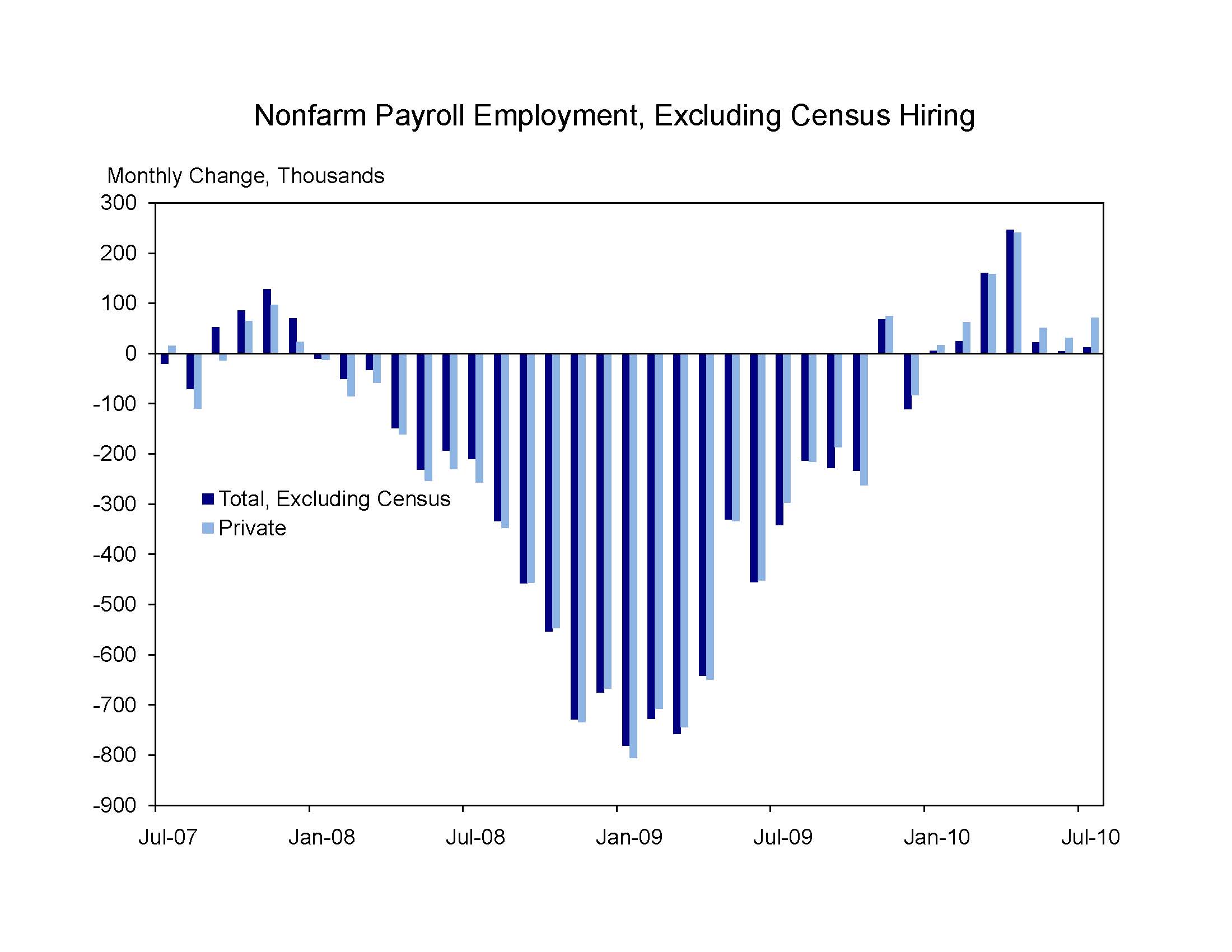
Private sector employment grew 71,000 in July, the seventh consecutive monthly increase, including continued growth in manufacturing. But, the pace of growth was not enough to reduce the overall unemployment rate, which remained 9.5 percent. There was, however, important variation in employment growth across industries: employment in manufacturing as well as education and health services increased, while that in financial services and construction decreased. Employment in state and local government, including public school teachers, decreased 48,000, underscoring the importance of the additional state fiscal relief working its way through Congress.
Overall payroll employment decreased 131,000. However, much of this decline was anticipated because of the winding down of temporary Census employment. The sharp decline in state and local government employment also contributed to the overall decline. Private sector employment increased 71,000, above the revised levels of private sector job growth in May (51,000) and June (31,000). Private sector employment has grown by 630,000 since its low point in December 2009. Average weekly hours in the private sector rose another one-tenth of an hour; hours are now five-tenths of an hour higher than they were in October 2009.
A bright spot in the private sector jobs numbers for July was the growth of manufacturing employment. Manufacturing employment grew 36,000, the seventh consecutive monthly rise. Manufacturing employment is now up 183,000 since its low point. Both financial services and construction shed jobs. Temporary help employment also fell, the first such fall since November 2009.
The unemployment rate held steady at 9.5 percent. Both the labor force and employment as measured by the household survey declined, though the decline in the labor force was decidedly smaller in July than in June. The unemployment rate declined particularly strongly for workers with only a high-school education (down 0.7 percentage points to 10.1 percent).
We have made substantial progress from the days when employment was declining by 750,000 a month. But, today’s employment report emphasizes just how important the additional jobs measures before Congress are. In addition to the state fiscal relief nearing passage, the President strongly supports the small business jobs bill and targeted incentives for clean energy investments.
There will likely be more bumps in the road ahead as the economy recovers. The monthly employment and unemployment numbers are volatile and subject to substantial revision. Therefore, it is important not to read too much into any one monthly report, positive or negative. It is essential that we continue our efforts to move in the right direction and replace job losses with robust job gains.
Christina Romer is the Chair of the Council of Economic Advisers



